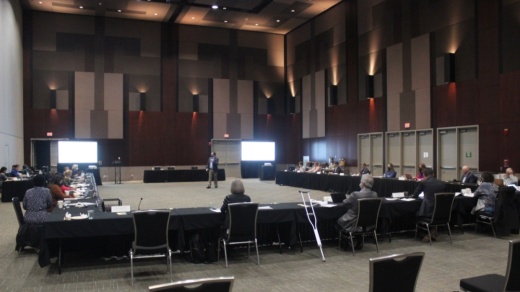“We have 15,000 employees, we have a $4.5 billion budget, and it takes a lot to make sure that we are still moving in a direction that is with your priorities front and center. And this document, this Strategic Direction 2023 really displays that," City Manager Spencer Cronk told council.
SD23 divides Austin's priorities into six main categories which inform council actions and annual budget planning. These areas, or strategic outcomes, include: culture and lifelong learning; economic opportunity and affordability; government that works for all; health and environment; mobility; and safety. Cronk said the Oct. 28 session offered officials an opportunity to "refocus" more than halfway through the five-year plan's timeline.
“In order for this to be successful, we need to make sure that we have the buy-in from our council and from our community that this is the direction that we need to be going in," he said. Council members and staff spent most of their hours-long review parsing through Austin's progress in each of the six outcome areas and laying out individual priorities for the coming years.
Housing
On affordable housing creation—a priority the city is falling well behind on—several council members requested more information on the Austin's housing pipeline and where new homes and apartments are coming from. Reporting on housing goals from the city and nonprofit HousingWorks Austin centers on new housing construction, which District 5 Council Member Ann Kitchen said does not represent a "complete picture" of new housing coming to town.
"It’s just a snapshot in time, although we’re starting to get trends, of what actually was built that year. And it doesn't even account for what's already been approved," Kitchen said. "It doesn't really tell us how we're doing or how we’re trending."
Kitchen also suggested a change in how council and staff broadcast their work on city homeless strategy. While SD23 reporting shows Austin being on track for several homeless housing and service goals—result based only on information from 2019 and 2020—Kitchen said the divisiveness of the high-profile issue warrants more transparency as the city looks to pour millions into its own initiatives and contracts with local organizations for care and housing.
“I think we need to accelerate and really take to the next level the way in which we communicate with the public what we’re doing with regard to homelessness response, because we’re not telling a story," she said. "We’re not telling a story about getting results and we’re not telling the story about what we’re doing."
Emergency response
District 10 Council Member Alison Alter also floated the idea of focusing on emergency response as a top indicator going forward given the effects of the COVID-19 pandemic and Winter Storm Uri on city operations.
Moving forward
The October forum was the first of two planned meetings city leaders will hold related to SD23 and next year's budget planning. Ahead of the next workshop, scheduled for January, council members also expressed a desire to dig deeper into the targets of the strategic plan and how their daily work supports those goals.
“What I would not like to see is council as a body getting off track from what the strategic direction is. And I think it would be good for us to consider how our policies and resolutions really fit into the strategic direction so we can close out 2023 strongly," District 6 Council Member Mackenzie Kelly said. District 2 Council Member Vanessa Fuentes also requested an update to the performance measures displayed on the city's SD23 dashboard and referenced by city management throughout the Oct. 28 meeting. The webpage measures SD23 outcomes and shows Austin on track or nearing success on most of them, but much of the data displayed is also pulled from earlier years.
"We [should] have as much information from the community or as much data gathered to be able to showcase an accurate barometer of where we stand as a community in January ‘22," she said.





